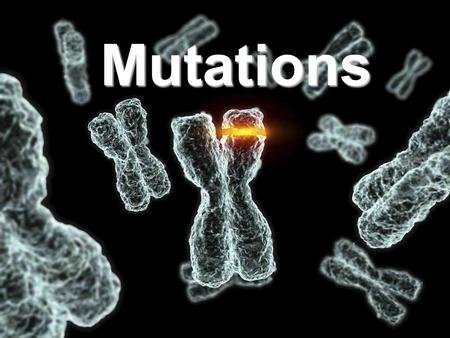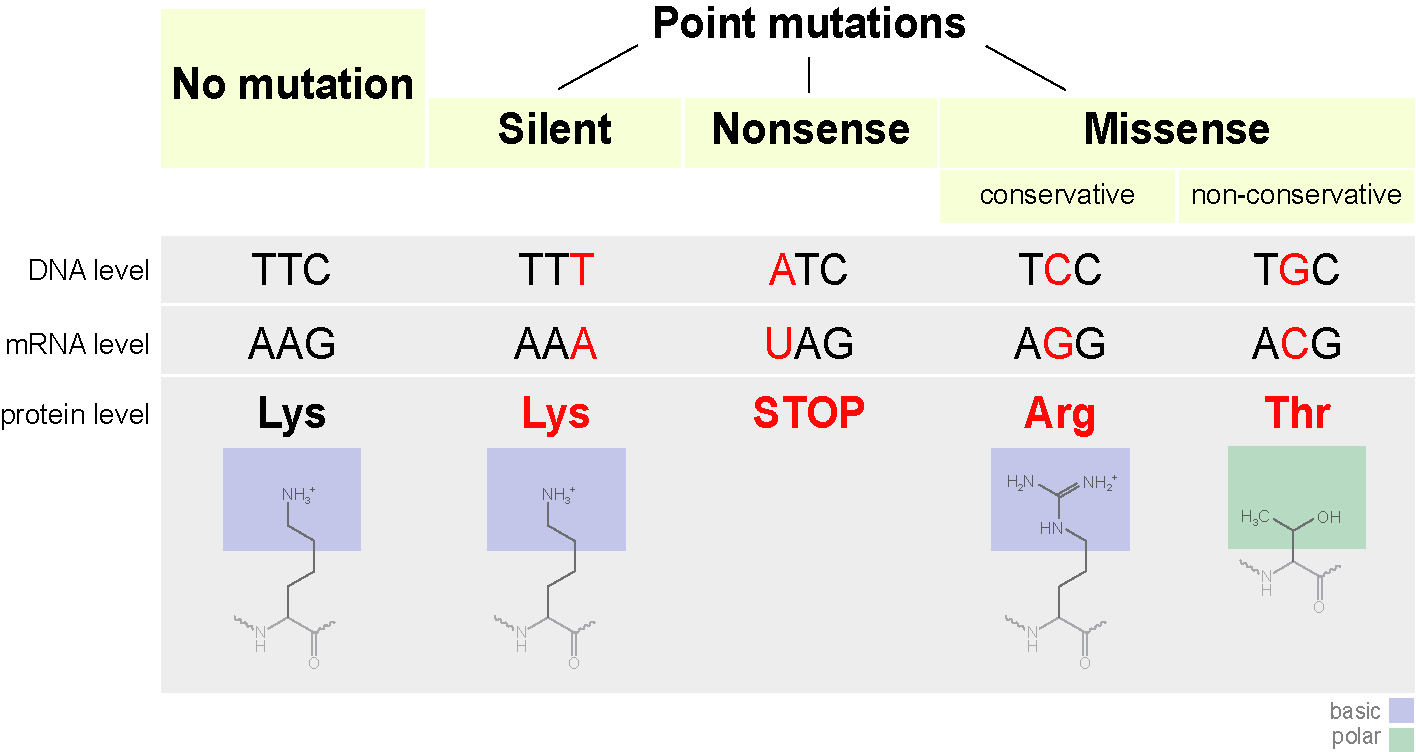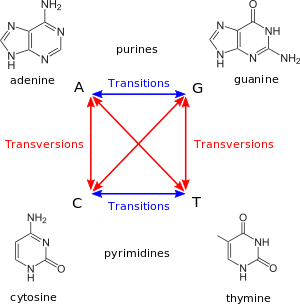Good day Steemians, Welcome to my blog.
Today article is about Mutation, What is Mutation, what happens during mutation, how does it happen, how many types of mutation do we have. You will know at the end of this articles and more to follow.
The properties of any microorganism depend on the sequence of the four nucleic acid bases on its genome: adenine (A), thymine (T), cytosine (C), and guanine (G).
The arrangement of these DNA bases dictates the distribution of genes and hence the nature of proteins synthesized.
Mutation can therefore be described as a change in the sequence of the bases in DNA (or RNA, in RNA viruses).
It is clear that since it is the sequence of these bases which is responsible for the type of proteins (and hence enzymes) synthesized, any change in the sequence will lead ultimately to a change in the properties of the organism.
Mutations can occur spontaneously or can be induced by chemical and physical agents involves change in the genetic material, might cause reduction, enhancement or loss of gene activity. This agents are called Mutagens.
Chemical mutagens (alkylating agents, base analogues, deaminating agents) or physical mutagens (UV and the Ionizing radiations: X-rays, gamma rays, alpha-particles and fast neutrons) could be used for increasing the mutation rate of bacteria.
Some mutations can be harmful, that is they cause decreased activity, or loss of activity
Some mutations can be beneficial that is they bring about new or enhanced activity (this drives evolution).
Types of mutations
- Base substitution / point mutation: single base at one point in DNA replaced by another base
A. Silent mutation - no change in the activity of the gene product
- no change in amino acid (often third base in codon) e.g. G-C-anything = alanine
- change in amino acid did not affect function of the protein
B. Missense point mutation - causes insertion of the wrong amino acid
Frameshift mutation one or a few nucleotides are deleted or inserted - this can alter the translational reading frame. Frameshift mutations almost always cause long stretch of altered amino acids resulting in inactive protein.
e.g. AUG GCU ACC GUC...
Met - Ala - Thr - Val
insert A at 4th position:
AUG AGC UAC CGU C…
Met - Ser - Tyr - Arg-
Mutagen - agent in environment that brings about DNA mutation.
Usually chemically or physically interact with DNA to cause change. Once mistake is fixed into the DNA the change is permanent.
Chemical mutagens (examples)
- Nitrous acid: converts A so it pairs with C instead of T
- Nucleoside analogs: have chemical structure similar to a base but do not base pair correctly e.g. 5- bromouracil incorporated in place of T but base pairs with G not A
- Benzopyrene (cigarette smoke): causes frameshift mutations: binds between bases and offsets the double helix strands, repair mechanisms add a base to the other strand to re-set alignment
Radiation
- x-rays and "-rays: create ions and free radicals that break molecular bonds
- UV: causes crosslinking of T bases (Thymine dimer) which can prevent unwinding for replication or transcription
Physical agents
(i) Ionizing radiations & (ii) Ultraviolet light
Ionizing radiations
X-rays, gamma rays, alpha-particles and fast neutrons are ionizing radiations and have all been successfully used to induce mutation. X-rays are produced by commercially available machines as well as van de Graaf generators. Gamma rays are emitted by the decay of radioactive materials such as Cobalt60. Fast neutrons are produced by a cyclotron or an atomic pile. Ionizing radiations are so called because they knock off the outer electrons in the atoms of biological materials (including DNA) thereby causing ionization in the molecules of DNA. As a result, highly reactive radicals are produced and these cause changes in the DNA
*To be continued in the next post....*
References
NLM
Yourgenome
Berkley
nature
Byjus



